FeLV Follow-up Testing
TXCAT ORG | Posted on |
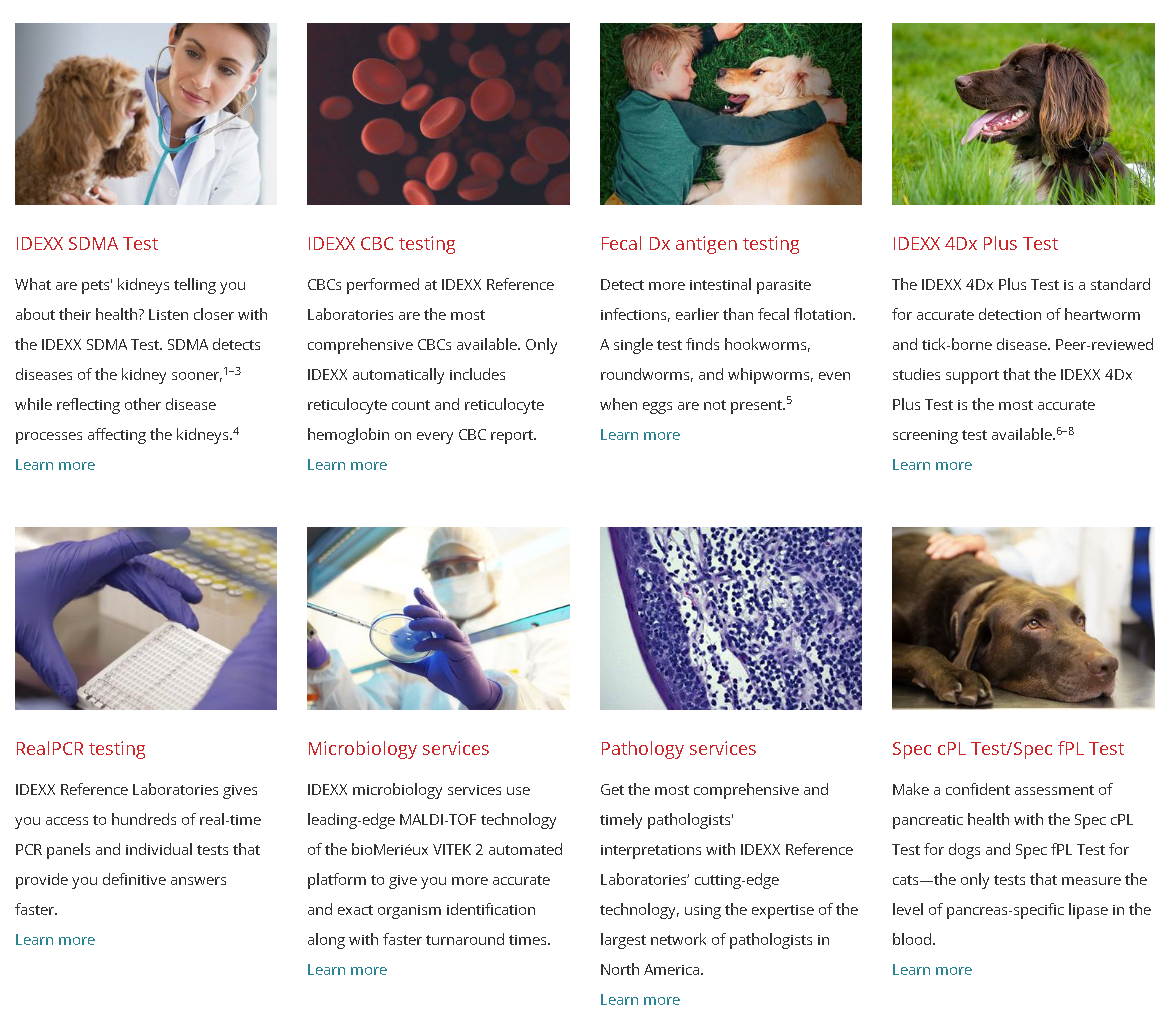
FeLV Repeated Testing Study Outcomes
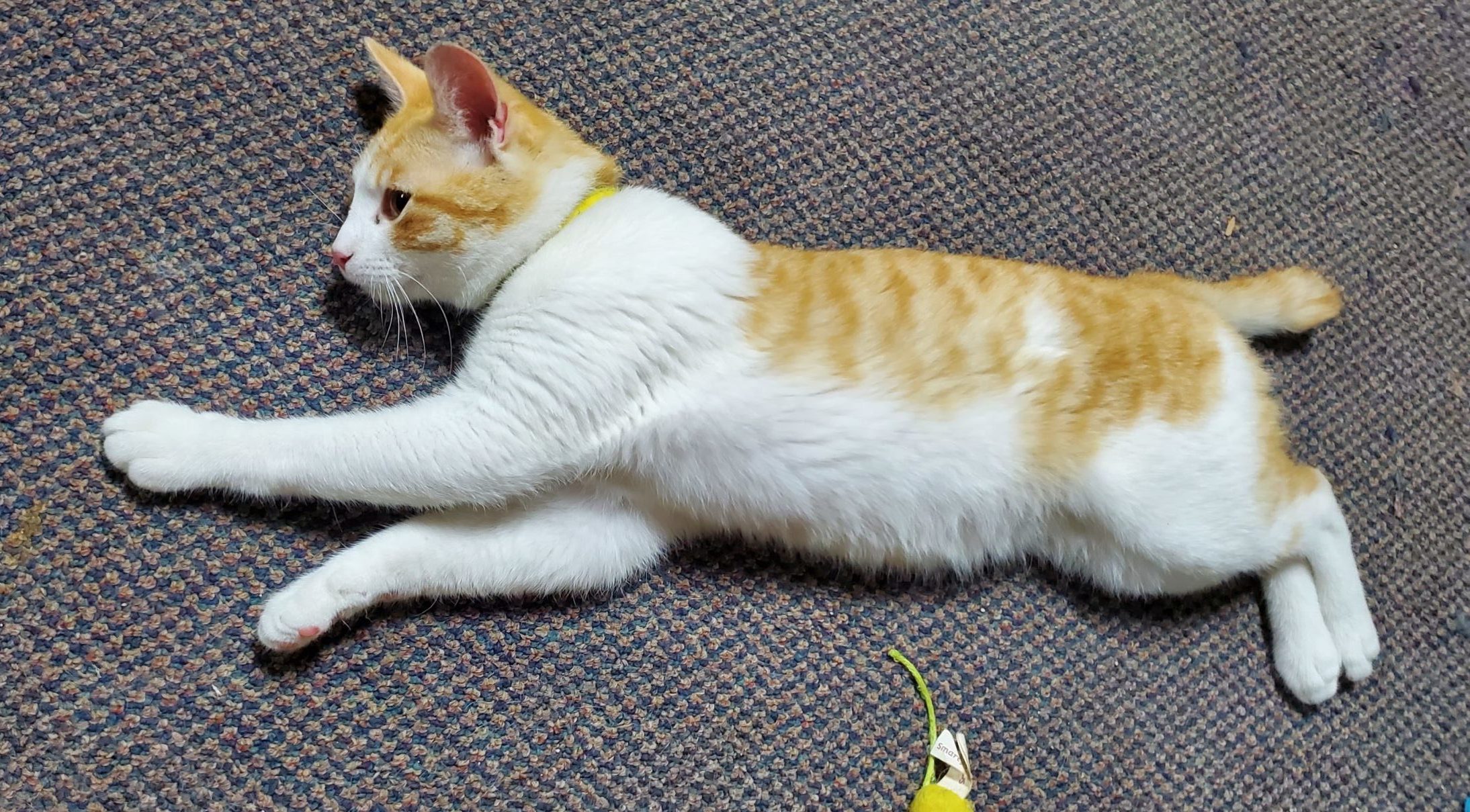
April 6, 2022 Josh, our newest intake at the time, went in for neuter surgery and tested FeLV(+). The vet called as soon as Josh was sedated and when the vet's combo FeLV/FIV test revealed that he was FeLV(+). The vet asked if we wanted to proceed with his surgery — or not — as in, since he is already asleep, put him further to sleep… permanently.
We chose to proceed with his surgery and brought him home with antibiotics and kenneled him separate from the other 45 cats.
He was fed Imuquin supplement in his wet food (Fancy Feast Gravy Lovers Chicken Feast in Grilled Chicken Flavor Gravy) and also provided premium dry food. (Pretty Please and Royal Canin Kitten)
He is so playful and if his life may be shortened, then he should have the chance to live a better life than in a kennel.
I feel so bad about him being caged up.
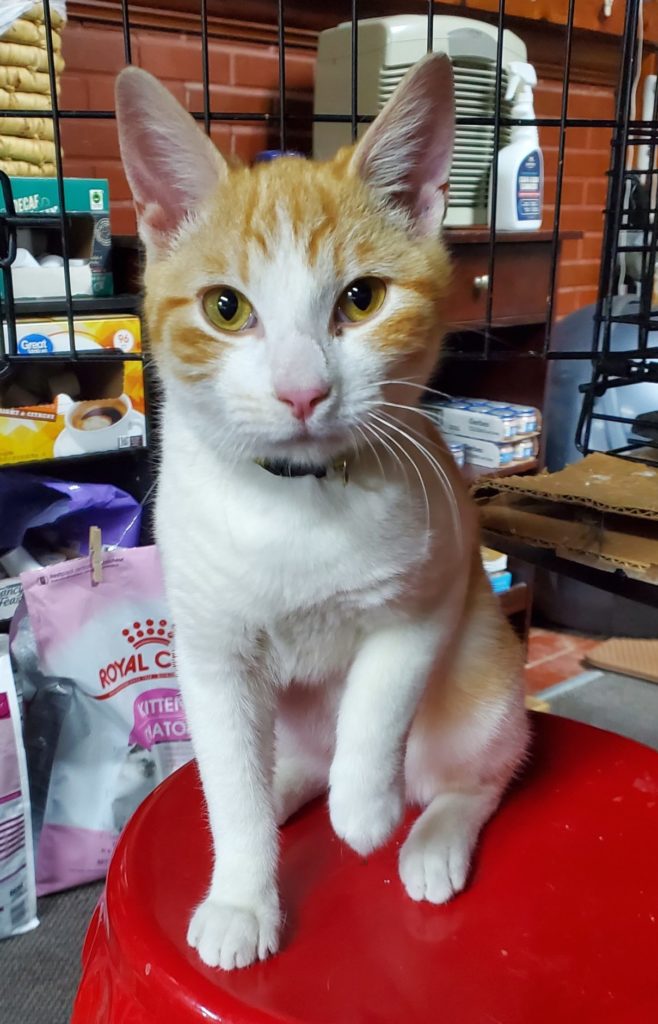
I contacted multiple rescues and Austin Pets Alive FeLV Adoption Center (2-month wait), but moving him to some rescues would just move him to a different kennel rather than assure him a good cat life since those rescues still face the huge challenge of locating an adopter for Josh.
Granted, it would be the easiest solution for us as he would immediately be away from our other 45 cats, you know, out of sight and out of mind… except that he would not be out of my mind. I would be haunted until I knew he was in a good situation or loving home rather than a kennel.
I reasoned that Josh could be just as comfortable in our kennel as in a rescue kennel awaiting adoption. In fact, he might even be more comfortable and his case might even prompt me to build him his own space here at the Duncan Home For Wayward Cats so he could share his life with another FeLV(+) cat or cats. 🙂
After two weeks had passed, instead of the month I had originally planned, I decided to go ahead with further testing to assess his status. I felt that follow-up testing would be prudent before making decisions for Josh that could be life or death.
The vet had suggested we consider a follow-up PCR test.
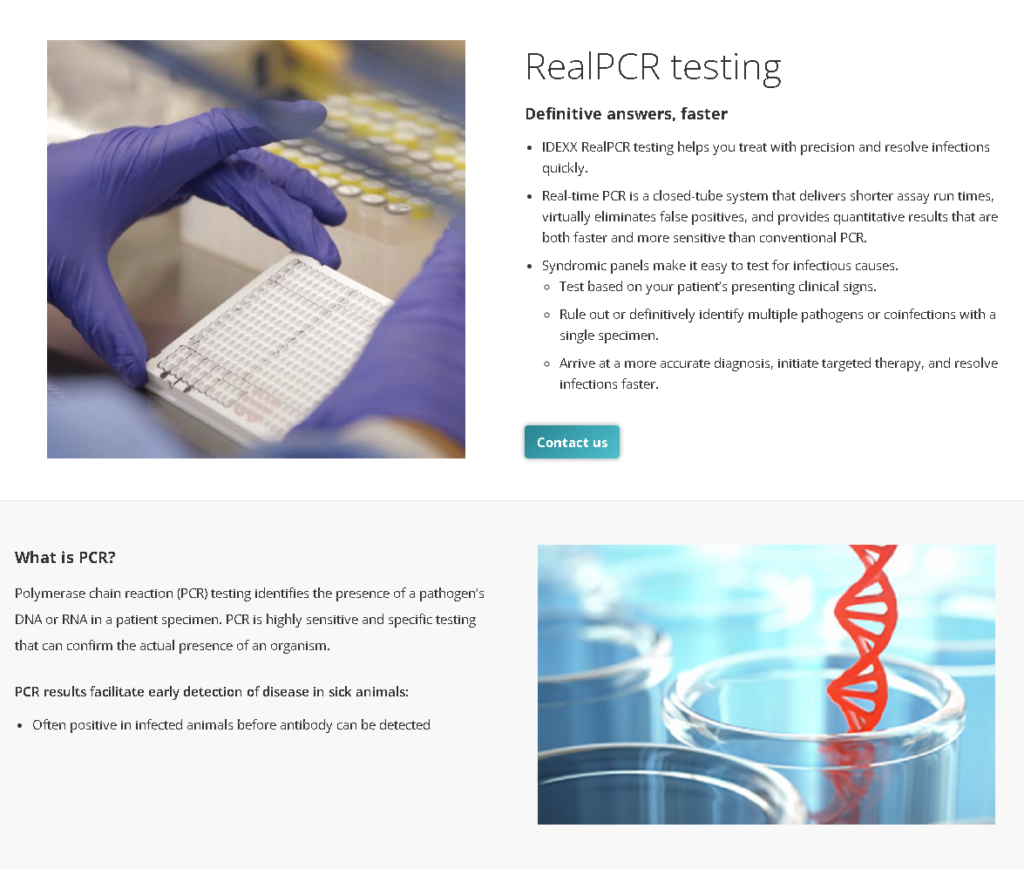
I also felt that additional testing might provide an opportunity to evaluate the consistency of test results should a 2nd SNAP Test provide different results than the 1st SNAP Test or should the additional PCR tests provide results different from both SNAP Test (s).
Furthermore, there are protocols designed to determine if results are consistent or discordant and how to interpret the results.
Now I just needed to educate myself in order to make informed decisions and move forward with evaluating Josh's circumstances.
There is probably more information presented in the sections below than most may want to read through.
Some other info is technically complex and intended for vets, but also informative.
Other info is intended for shelters and is extremely informative and in plain English. The American Association of Feline Practitioners (AAFP) new 2020 AAFP (FeLV/FIV Guidelines For Shelters is a MUST READ.
If you do read through all the information and absorb a good deal of it, when you are done you may know more about FeLV than your vet because only 2-3% of cats contract FeLV, so the majority of vets may only see very few cases, and thus may not be very familiar with FeLV and advances in understanding and managing it.
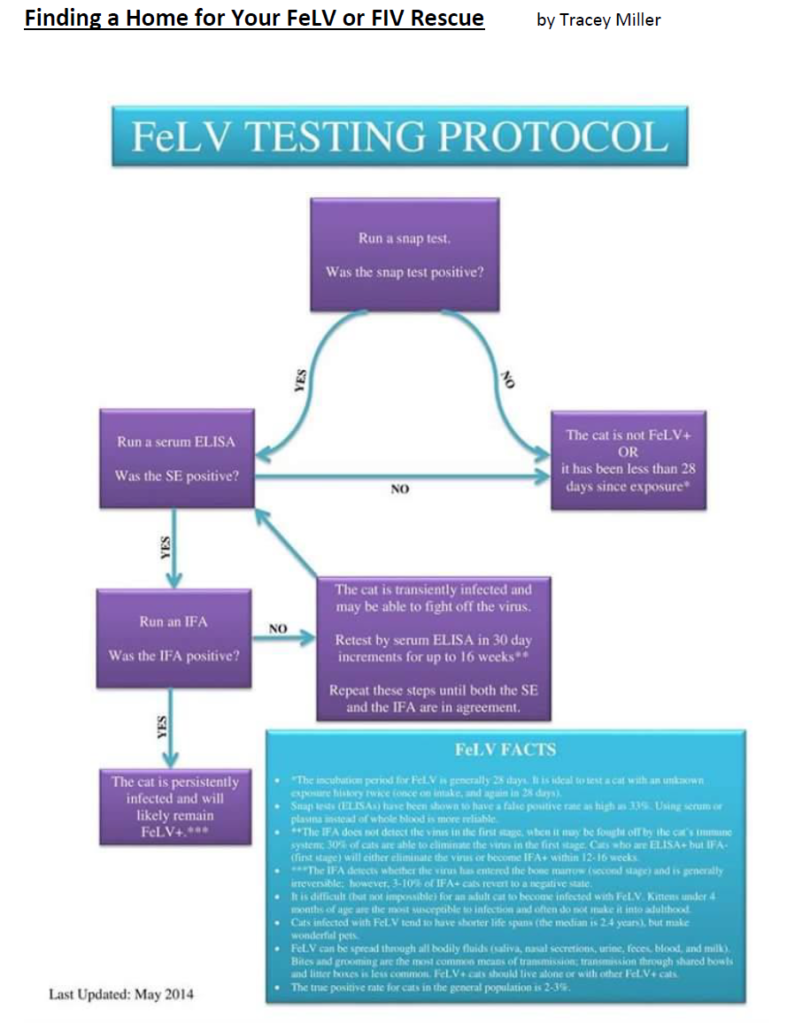
- PCR (polymerase chain reaction) tests are a fast, highly accurate way to diagnose certain infectious diseases and genetic changes. The tests work by finding the DNA or RNA of a pathogen (disease-causing organism) or abnormal cells in a sample.
- DNA is the genetic material that contains instructions and information for all living things.
- RNA is another type of genetic material. It contains information that has been copied from DNA and is involved in making proteins.
- Most viruses and other pathogens contain DNA or RNA.
- Unlike many other tests, PCR tests can find evidence of disease in the earliest stages of infection. Other tests may miss early signs of disease because there aren't enough viruses, bacteria, or other pathogens in the sample, or your body hasn't had enough time to develop an antibody response. Antibodies are proteins made by your immune system to attack foreign substances, such as viruses and bacteria. PCR tests can detect disease when there is only a very small amount of pathogens in your body.
- During a PCR test, a small amount of genetic material in a sample is copied multiple times. The copying process is known as amplification. If there are pathogens in the sample, amplification will make them much easier to see.
- Other names: polymerase chain reaction, rtPCR, reverse transcription PCR, qPCR, quantitative PCR, real-time PCR
- ELISA stands for enzyme-linked immunoassay.
- It is a commonly used laboratory test to detect antibodies in the blood.
- IFA is an assay which uses fluorescent microscopy to detect antibodies to specific antigenic material.
- This test is often used to confirm positive results obtained by an ELISA test.
- To think of what an antigen is, imagine any substance your body does not recognize and tries to fight off.
- Like the PCR test, the antigen tests are diagnostic. They assess whether the virus is currently in the body.
- Unlike the PCR test, which detects the virus’ genetic material, the antigen test looks for the virus’ specific proteins or glycans.
- A positive antigen test indicates that a current FeLV infection is present
- A negative antigen test indicates that infection is unlikely. There is a small possibility that the infection has occurred so recently that the test cannot detect the virus, or that the test has returned a false negative for some other collection- or processing-related reason. Still, the most likely scenario is that there is no infection.
- An antigen test cannot tell you whether you have had a previous infection. Once an active infection is gone, the antigens on the virus’ surfaces are gone as well.
- To think of what an antibody is, imagine that when the immune system reacts to an antigen, the body creates antibodies.
- An antibody test looks for antibodies in the blood.
- An antibody test tells whether the cat had an FeLV infection in the past. It cannot diagnose a current FeLV infection. Antibody tests are not useful for diagnosing a current infection because the body requires substantial time to build up antibodies.
- Unlike the PCR and antigen test, which require swabs or saliva samples, the antibody test requires a blood draw or finger stick.
- False positives: False positives occasionally occur when the cat has previously had exposure to similar viruses. In that case, the test may detect the antibodies present in the body because of the previous virus infections.
- False negatives: Antibody tests sometimes return false negatives when administered too soon after infection. Conducting an antibody test before antibodies have had sufficient time to build up will return a negative result, even an infection is present.
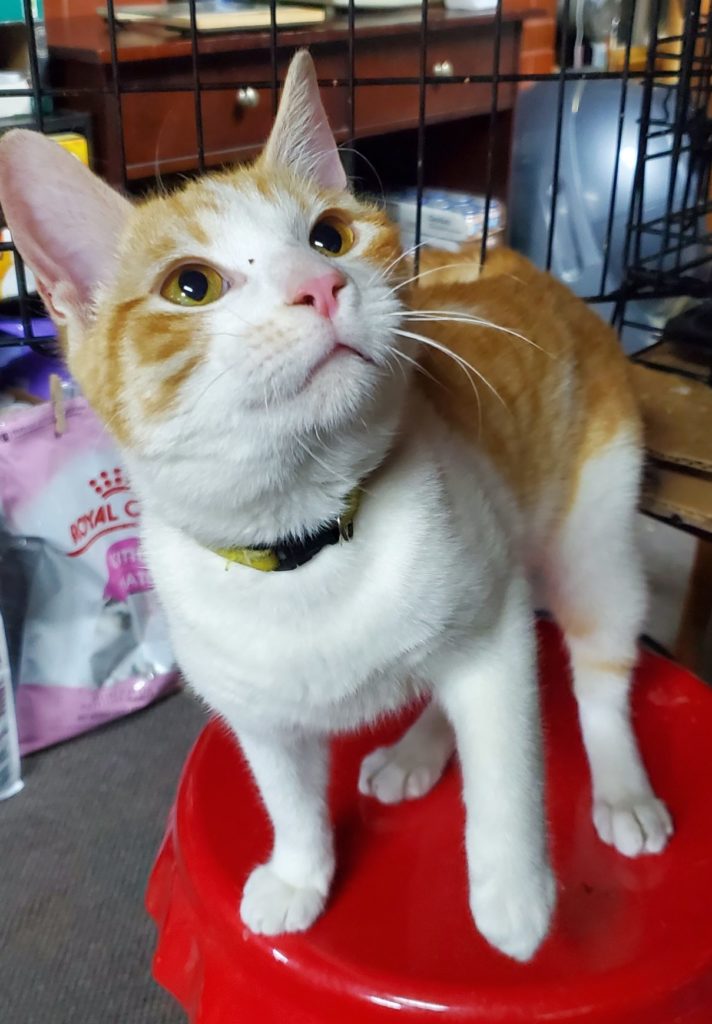
Based on all the information presented above we proceeded as follows:
- Josh's 1st SNAP Test was:
IDEXX SNAP FIV/FeLV Combo TestPositive or negative. (Josh was positive)
FeLV Antigen:
The American Academy of Feline Practitioners highly recommends confirming FeLV ELISA positive results. Consider the FeLV Antigen by IFA (test code 717) or the FeLV RealPCR Test (test code 2635).
FIV Antibody:
The American Academy of Feline Practitioners highly recommends confirming FIV ELISA positive results. Consider an alternate serologic method such as the FIV Antibody by Western Blot (test code 896) or a Feline Triple SNAP test (test code 3755 or performed in-house). A maternal antibody may be present in uninfected kittens younger than 6 months of age. Cats vaccinated with the FIV vaccine may test positive on any serologic test as early as 28 days post-vaccination and stay positive for at least 1 year. In serologically positive cats that have been vaccinated or have an unknown vaccination history, an FIV RealPCR test (Test Code 2866) should be considered to help identify FIV-infected cats.
- Josh's 2nd SNAP Test was:
IDEXX SNAP FIV/FeLV Combo Test
(Josh was positive again) - Two additional follow-up IDEXX tests were ordered for Josh. The 1st test is a combo test:
- FeLV Antigen by ELISA (709) with
FeLV Quant RealPCR™ Test (26354)
Both Tests Combined (26355)
Includes quantification of FeLV viral particles if PCR positive- (709) FeLV Antigen by Elisa
Positive or negative.
The American Academy of Feline Practitioners highly recommends confirming FeLV ELISA positive results.
Consider the FeLV Antigen by IFA (test code 717) or the FeLV RealPCR Test (test code 2635).- (717) FeLV Antigen by IFA
Positive or negative
ELISA positive and IFA positive indicates persistent infection.
ELISA positive and IFA negative- discordant results- possible immune carrier, focal infection, or transient viremia. The outcome is unpredictable.
Suggest retesting by ELISA and IFA in 30-60 days (AAFP and AFM Recommendations).
Note: false-negative results may occur if the slide submitted is poorly prepared or if low numbers of infected cells are present. - (2635) FeLV RealPCR Test
No quantification analysis
A positive FeLV PCR result indicates the presence of FeLV proviral DNA in the sample submitted.
This confirms FeLV infection.
FeLV vaccination does not interfere with FeLV PCR testing.
Infected cats can be asymptomatic.
Quantification of FeLV proviral DNA may provide additional information for staging (regressive vs progressive) and monitoring of FeLV infection. A negative FeLV PCR result indicates that FeLV proviral DNA was not detected in the sample submitted.
If the FeLV antigen by ELISA result is also negative, FeLV infection is very unlikely.
Occasionally, the FeLV antigen test by ELISA may be positive in a cat with a negative FeLV PCR result.
This combination is most consistent with a regressive or localized FeLV infection.
Less commonly, the proviral DNA in the sample may be below the limit of detection, the sample may contain an uncommon strain that is not detected by PCR or the antigen test was falsely positive. Learn more at www.idexx.com/FeLVQuant
- (717) FeLV Antigen by IFA
- (26354) FeLV Quant RealPCR™ Test
Includes quantification of FeLV viral particles if PCR positive
A positive FeLV PCR result indicates the presence of FeLV proviral DNA in the sample submitted.
This confirms FeLV infection.
FeLV vaccination does not interfere with FeLV PCR testing.
Infected cats can be asymptomatic.
Quantification of FeLV proviral DNA may provide additional information for staging (regressive vs progressive) and monitoring of FeLV infection. A negative FeLV PCR result indicates that FeLV proviral DNA was not detected in the sample submitted.
If the FeLV antigen by ELISA result is also negative, FeLV infection is very unlikely.
Occasionally, the FeLV antigen test by ELISA may be positive in a cat with a negative FeLV PCR result.
This combination is most consistent with a regressive or localized FeLV infection.
Less commonly, the proviral DNA in the sample may be below the limit of detection, the sample may contain an uncommon strain that is not detected by PCR or the antigen test was falsely positive.Low DNA Load:Quantitative results <1.0 x 10^6 copies/mL are consistent with a regressive FeLV infection. Regressive FeLV infections are associated with lower levels of proviral DNA in circulating blood cells and lower amounts of FeLV p27 antigen in circulation. Cats with regressive infections may transmit FeLV by blood transfusion even if antigen negative. Cats with regressive infections may remain nonclinical or may revert to progressive infection in association with immunosuppression, stress, or concurrent disease. Regressively infected cats may mount a sufficient immune response to eventually become PCR and/or antigen negative.High DNA Load:Quantitative results >=1.0 x 10^6 copies/mL are consistent with a progressive FeLV infection. Progressive FeLV infections are associated with high levels of proviral DNA in circulating blood cells and greater amounts of FeLV p27 antigen in circulation. Cats with progressive infections are more likely to be infectious to other cats and are at increased risk of FeLV-associated diseases. The prognosis for cats with progressive infections is variable depending on current immune status, stress, or concurrent disease. Some progressive cats will remain nonclinical for several years. Learn more at www.idexx.com/FeLVQuant
- (709) FeLV Antigen by Elisa
- The 2nd follow-up test ordered for Josh:
(717) FeLV Antigen by IFAPositive or negative
ELISA positive and IFA positive indicates persistent infection.
ELISA positive and IFA negative- discordant results- possible immune carrier, focal infection or transient viremia. The outcome is unpredictable. Suggest retesting by ELISA and IFA in 30-60 days (AAFP and AFM Recommendations).
Note: false-negative results may occur if the slide submitted is poorly prepared or if low numbers of infected cells are present.
- FeLV Antigen by ELISA (709) with
Follow Josh's bloodwork and PCR test results here: https://txcat.org/josh-bloodwork-and-felv-quant-pcr-tests/

Leave a Reply